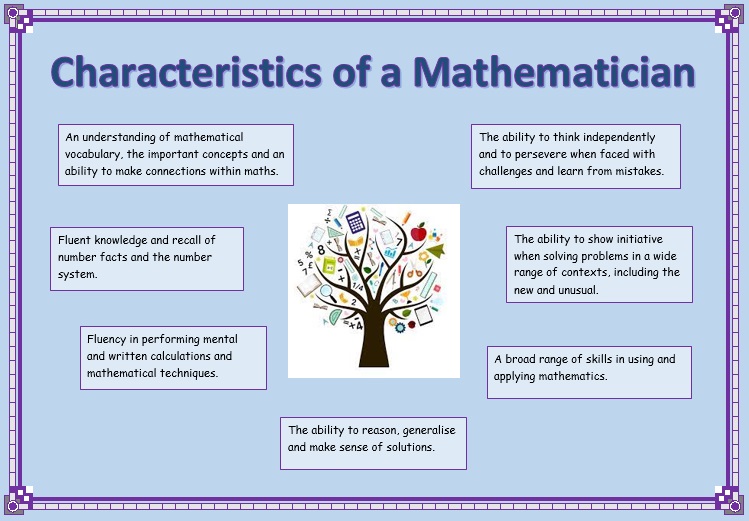“Pure mathematics is, in its way, the poetry of logical ideas.” - Albert Einstein
What does mathematics look like at St. Bernadette’s?
At St. Bernadette’s, we promote a positive, can-do mind-set where we expect to learn from mistakes. As a staff, we have high expectations of children and a belief that all children can succeed. We carefully design lessons to ensure all children access rich, problem solving tasks, applying the mastery principles of coherence, variation, representation and structure, mathematical thinking and fluency. Children are provided with enjoyable and engaging tasks that build skills and allow misconceptions to be diagnosed. There are regular opportunities for children to talk mathematically, using accurate mathematical vocabulary. Concrete manipulatives and pictorial representations help learners to uncover and articulate mathematical structure. We provide opportunities for greater depth of understanding and challenge, primarily through problem-solving and reasoning activities. Activities are planned to support fluency in a range of mental strategies and retention of key calculation strategies and key vocabulary. Children make links to mathematics in science and foundation subjects and we use Times Table Rockstars to support retention of multiplication facts. To facilitate children to know more and remember more, key concepts run through the whole of our mathematics curriculum and opportunities to revisit previous learning are explicitly planned.
Maths Documents
Teaching for Mastery at St. Bernadette’s
Mastering maths means pupils of all ages acquiring a deep, long-term, secure and adaptable understanding of the subject. The phrase ‘teaching for mastery’ describes the elements of classroom practice and school organisation that combine to give pupils the best chances of mastering maths. Achieving mastery means acquiring a solid enough understanding of the maths that’s been taught to enable pupils to move on to more advanced material.
The five ‘big ideas’ underpin teaching for mastery in both primary and secondary schools:
Coherence
Lessons are broken down into small connected steps that gradually unfold the concept, providing access for all children and leading to a generalisation of the concept and the ability to apply the concept to a range of contexts.
Representation and Structure
Representations used in lessons expose the mathematical structure being taught, the aim being that students can do the maths without recourse to the representation
Mathematical Thinking
If taught ideas are to be understood deeply, they must not merely be passively received but must be worked on by the student: thought about, reasoned with and discussed with others
Fluency
Quick and efficient recall of facts and procedures and the flexibility to move between different contexts and representations of mathematics
Variation
Variation is twofold. It is firstly about how the teacher represents the concept being taught, often in more than one way, to draw attention to critical aspects, and to develop deep and holistic understanding. It is also about the sequencing of the episodes, activities and exercises used within a lesson and follow up practice, paying attention to what is kept the same and what changes, to connect the mathematics and draw attention to mathematical relationships and structure.

Maths at St. Bernadette's
Year Two have been learning about place value through the use of manipulatives and place value charts.
Y2 Place Value
Year Three have been making arrays using counters. This will support their understanding of multiplication and division.
.png)
